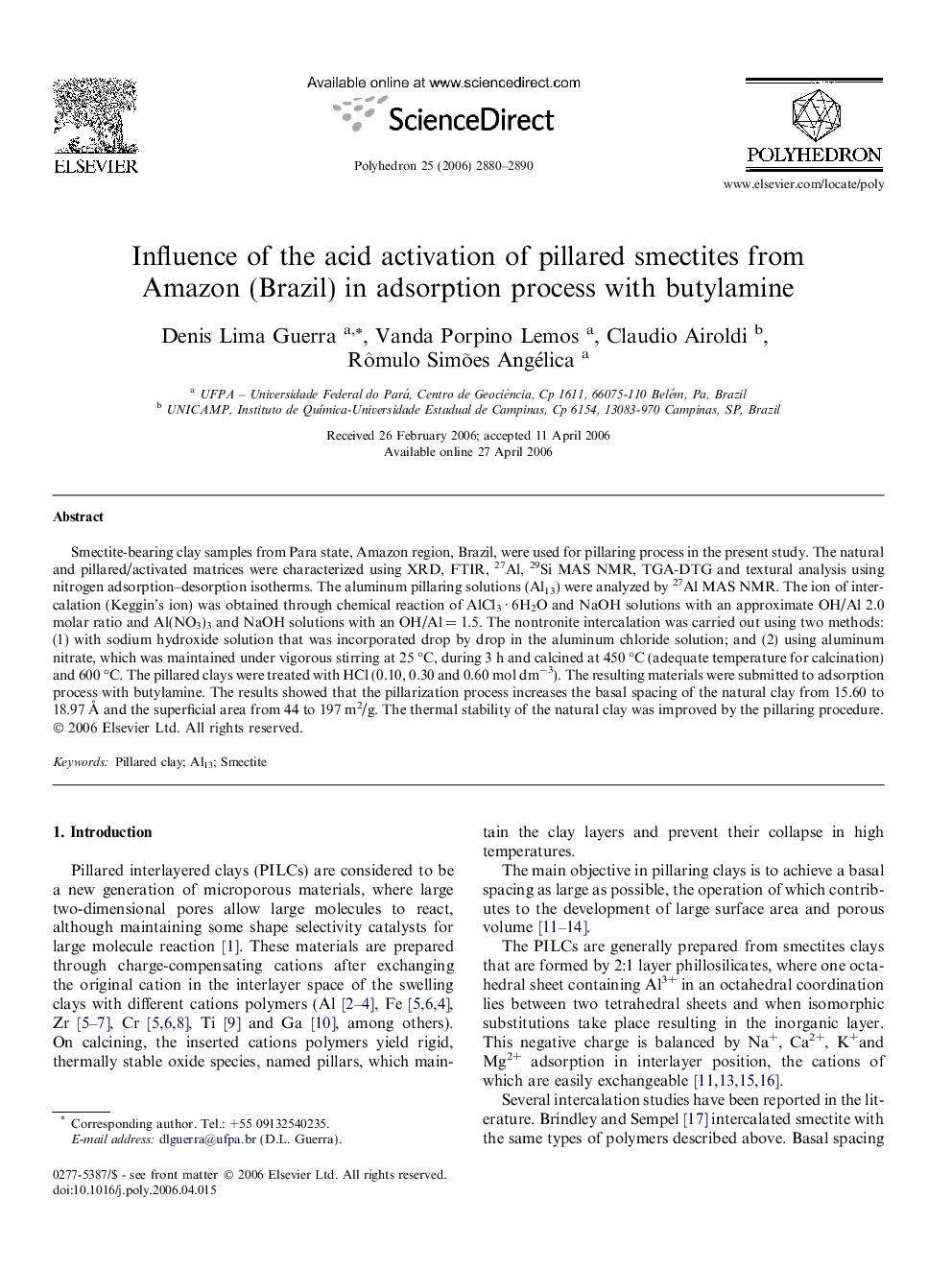| Article ID | Journal | Published Year | Pages | File Type |
|---|---|---|---|---|
| 1335633 | Polyhedron | 2006 | 11 Pages |
Smectite-bearing clay samples from Para state, Amazon region, Brazil, were used for pillaring process in the present study. The natural and pillared/activated matrices were characterized using XRD, FTIR, 27Al, 29Si MAS NMR, TGA-DTG and textural analysis using nitrogen adsorption–desorption isotherms. The aluminum pillaring solutions (Al13) were analyzed by 27Al MAS NMR. The ion of intercalation (Keggin’s ion) was obtained through chemical reaction of AlCl3 · 6H2O and NaOH solutions with an approximate OH/Al 2.0 molar ratio and Al(NO3)3 and NaOH solutions with an OH/Al = 1.5. The nontronite intercalation was carried out using two methods: (1) with sodium hydroxide solution that was incorporated drop by drop in the aluminum chloride solution; and (2) using aluminum nitrate, which was maintained under vigorous stirring at 25 °C, during 3 h and calcined at 450 °C (adequate temperature for calcination) and 600 °C. The pillared clays were treated with HCl (0.10, 0.30 and 0.60 mol dm−3). The resulting materials were submitted to adsorption process with butylamine. The results showed that the pillarization process increases the basal spacing of the natural clay from 15.60 to 18.97 Å and the superficial area from 44 to 197 m2/g. The thermal stability of the natural clay was improved by the pillaring procedure.
Graphical abstractThe pillared interlayered clays are prepared through charge-compensating cations exchange present in the interlayer space of the swelling clays with aluminum cations polymer. On calcining, the inserted cations polymers yield rigid, thermally stable oxide species, named pillars.Figure optionsDownload full-size imageDownload as PowerPoint slide
